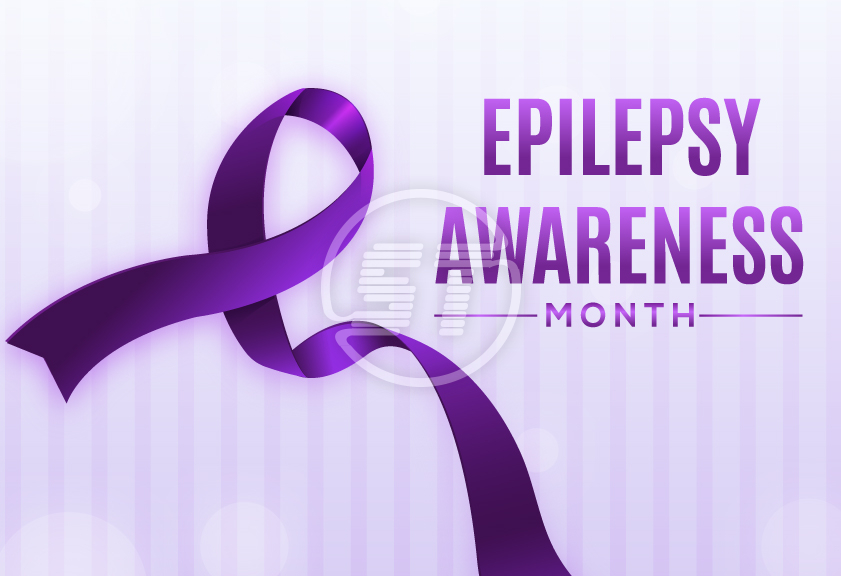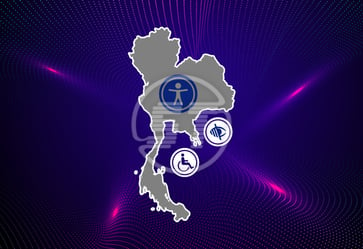Epilepsy Awareness Month is observed every November to raise awareness about epilepsy, a neurological condition affecting around 50 million people worldwide. This observance aims to educate everyone globally about epilepsy, reduce stigma, and encourage a more inclusive and supportive environment for people living with the condition.
One essential aspect of this inclusion is the digital space, ensuring websites and online content are accessible and safe for individuals with epilepsy. Read the article to learn how simple efforts can provide an accessible web world to individuals suffering from epilepsy.
Epilepsy and seizures – A disorder that needs an ordered web!
Epilepsy is a neurological disorder that involves seizures. A person suffering from epilepsy often faces abnormal electrical activities in the brain causing seizures.
Photosensitive epilepsy is a form of epilepsy where seizures are triggered by visual stimuli such as flashing lights, rapidly changing images, or specific patterns. These seizures can occur when exposed to certain types of visual content, including web animations, videos, or bright, contrasting colors. While photosensitive epilepsy only affects around 3% of people with epilepsy, it is still crucial for web designers and content creators to be aware of how they can inadvertently create dangerous online experiences.
With the internet being an integral part of daily life, digital accessibility extends beyond simply making text legible or navigation intuitive. It also involves ensuring that multimedia content and design choices do not put some users at risk. By creating seizure-safe websites, organizations help protect individuals with photosensitive epilepsy from potentially harmful content. Furthermore, it promotes inclusivity, allowing everyone to have a safe and enjoyable browsing experience.
Guidelines for creating seizure-safe websites!
To make websites safer for people with photosensitive epilepsy, several strategies can be implemented to minimize risks. Some crucial considerations that can help create inclusive digital experiences are:
Avoid flashing content and rapidly changing imagery!
Flashing lights, strobe effects, or rapid image changes at a frequency of 3 to 30 flashes per second can trigger seizures in individuals with photosensitive epilepsy. It is essential to avoid content that flashes rapidly, especially in this frequency range. If flashing elements are necessary for the content, users should be provided with an option to disable them or be given adequate warning.
Use high-contrast colors sparingly!
While high contrast can improve readability, excessively bright and contrasting colors, especially in large blocks, can cause discomfort for some users. It is recommended to use a more subdued color scheme or provide a dark mode option that allows users to adjust the brightness and contrast settings according to their needs. This can help reduce the risk of triggering a seizure while still maintaining readability.
Provide controls to Pause, Stop, or Hide dynamic content!
Animations, auto-playing videos, and GIFs can be problematic for individuals with photosensitive epilepsy, particularly if they contain rapid motion or flashing lights. Website developers should always include controls that allow users to pause, stop, or hide any moving content. The World Wide Web Consortium (W3C) Web Content Accessibility Guidelines (WCAG) also recommend providing user controls for content that updates or moves automatically.
Test content for seizure risks
Several tools can help web developers check their content for potential seizure triggers. For instance, the W3C offers the Photosensitive Epilepsy Analysis Tool (PEAT), which evaluates whether content might provoke seizures. Utilizing such tools during the development process ensures that any potentially hazardous content is identified and adjusted before it reaches users.
Follow web accessibility standards!
The Web Content Accessibility Guidelines (WCAG) include standards that help ensure web content is accessible to people with a variety of disabilities, including photosensitive epilepsy. Following WCAG’s guidelines on reducing the risk of seizures (specifically, Guideline 2.3) can significantly improve the safety of the website. Adhering to these standards not only helps users with photosensitive epilepsy but also ensures that the website is compliant with global accessibility standards.
Include a warning where needed!
If the website features content that may trigger seizures, include a clear warning before displaying the content. This can give users the opportunity to avoid the content or proceed with caution. Warnings should be placed in prominent locations and be easy to understand, indicating the nature of the content and why it may be problematic.
Raising awareness during epilepsy awareness month
Web developers, designers, and content creators have a significant role to play in making the Internet a safer place for everyone. By incorporating seizure-safe practices into web design, they can help prevent harm and make digital spaces more inclusive. This commitment also aligns with broader digital accessibility efforts, which aim to make the web usable for people with all kinds of disabilities.
Epilepsy Awareness Month provides an ideal opportunity to spotlight the importance of creating seizure-safe websites. Businesses/organizations can contribute by:
- Sharing information about seizure-safe web practices on social media and blogs.
- Educating teams involved in web development and design about the risks of photosensitive epilepsy.
- Conducting manual website accessibility audit to ensure compliance with accessibility standards and implement necessary changes.
- Advocating for web accessibility as a key component of overall digital inclusion efforts.
In a nutshell,
The internet should be accessible and inclusive for everyone, regardless of their health conditions or disabilities. By taking steps to create seizure-safe websites, organizations can help protect people with photosensitive epilepsy and promote a more equitable digital environment.
This Epilepsy Awareness Month, let’s work together to make the web a safer place. Everyone deserves the opportunity to browse the internet without risking their health!
At Skynet Technologies, we understand the importance of accessibility for all users, including those with epilepsy. With our All in One Accessibility, you can access features like reduced motion, color adjustments, and flashing content warnings to create a safer, more inclusive digital environment. Take the first step toward accessibility compliance and a more welcoming web experience. Ready to make a difference? Reach out at hello@skynettechnologies.com for more information.


